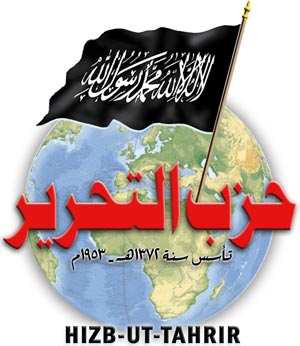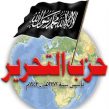
The Caliphate in South Asia: A Profile of Hizb-ut Tahrir in Pakistan
Publication: Terrorism Monitor Volume: 12 Issue: 14
By:

Unlike other radical Islamist organizations in Pakistan, the Hizb-ut Tahrir (HT – Party of Freedom) takes a covert approach to disseminating its Islamist ideology and agendas. The organization is so secretive that most Pakistanis are not even aware of its existence. HT defines its target audience as senior military officers, civil bureaucrats and professionals, including doctors, engineers, accountants, managers in multi-national corporations and other categories of highly-educated youth.
Founded in Palestine in 1953 by Taqi al-Din Nabhani, a jurist and Islamist cleric who was a former member of Muslim Brotherhood, the HT adheres to the Salafi brand of Islam with the goal of restoring the Islamic Caliphate. The organization could not manage to hold ground in the Middle East and instead took root in Central Asia and the UK, where it became popular amongst British youth of Pakistani and Bangladeshi origins.
According to HT defectors, the organization aims to re-establish the Caliphate (abolished in 1924) in one of the Muslim-majority countries, to be followed by the imposition of Shari’a and the unification of all Muslim-majority countries by virtue of conquest, thus reclaiming lost lands and glory. The final stage would be the declaration of war on the Western world. [1] The ideology and strategic plan of HT resemble al-Qaeda but the modus operandi of the two entities is different. HT believes neither in democracy nor in revolutionary take-over.
Pakistan is considered a special case by HT. The organization’s plan for Pakistan is as follows:
· Recruitment of high-ranking military and civil officers
· Indoctrination of the youth of premier universities (both private and public) with HT ideologies
· The overthrow of the government in a bloodless military coup
· Imposition of Islamic Shari’a and the end of the kufr (infidel) system of democracy
· Declaring Pakistan the new Islamic Caliphate
· Spreading the borders of the Caliphate by means of offensive and aggressive jihad
· Reclaiming the lost lands, that is from Spain to Russia and China
· Invading and conquering the “infidel lands.” [2]
A nuclear-armed yet poverty-ridden country, with a low literacy rate and history of military coups, Pakistan’s situation has led HT to prioritize its efforts in that country.
Bringing military officers into its fold is an important part of HT’s strategy. The movement’s preference for a military coup as a means of taking power is based on the following factors:
· Pakistan is a nuclear-armed nation with a fast-growing nuclear arsenal
· Pakistan has a history of military coups (four so far)
· The influence of the armed forces in Pakistan is second to none
· Bureaucracies, both military and civil, are pivotal in controlling and managing the affairs of the country; therefore both have to be cajoled.
HT presented its mission statement for Pakistan in a 2011 monograph, Return of the Khilafah: A Vision of Pakistan under the Khilafah and how an Islamic Constitution will give rise to Policies of Revival. [3] The 64-page document outlines the problems of Pakistan, including issues related to revenue collection, electricity generation, inflation, military doctrine, education, ethnic violence in Karachi and a separatist insurgency in Balochistan. Return of the Khilafah provides guiding principles for the caliph in the realm of foreign policy, calling for an end to all types of relations with India, the United States and the Western world before framing a policy based upon military brinkmanship. Diplomatic relations with neutral non-Muslim countries would only be established in order to propagate the message of Islam by capitalizing on the prevailing liberal and secular environment in those countries.
The overall focus of HT constitution remains military-centric. Several articles of the constitution emphasize the need for a strong “Islamic Army” capable of spreading the boundaries of the Caliphate from Pakistan into India and Central Asia. The caliph would be the supreme commander of the armed forces.
The military regime of General Pervez Musharraf banned the organization not because it was involved in terrorist or sabotage activities, but rather because it was trying to influence senior military officers (The News [Islamabad], February 28, 2013). Unlike the United Kingdom, where HT operates openly, in Pakistan the movement consists of a network of secretive cells, making an understanding of its hierarchy difficult.
The foundations of HT Pakistan were laid in 1999 by Imtiaz Malik, Taimur Butt, Imran Yousafzai, Shahzad Shaikh, Muhammad Irfan, Naveed Butt and Maajid Nawaz. All were Western-educated and had U.S. or UK citizenship. [4] Naveed Butt is currently the HT spokesman for Pakistan. A business graduate of the University of Illinois, Butt works for mobile phone company Motorola in Lahore. Butt came to light in January 2011 when he issued a videotaped “open letter” to officers of the Pakistan Army. [5] In the provocative letter, Butt explicitly asked Pakistani military officers to rebel against the state: “Oh officers of Pakistan’s armed forces! You are leading the largest and the most capable Muslim armed forces in the world… you must move now to uproot Pakistan’s traitor rulers.” Butt was later picked up by military intelligence.
HT’s focus from the beginning has been on recruiting senior military officers and highly educated youth for the purpose of taking over the reins of state in a coup d’état. It is estimated that in the last ten years, HT has attempted three times to penetrate the Pakistan Army (Dawn [Karachi], October 2012). In 2003, HT recruited 13 officers of Pakistan’s Special Services Group (SSG), an elite Special Forces unit. All were subsequently court-martialed. In 2009, Lieutenant Colonel Shahid Bashir was court-martialed on the same charges. Bashir was recruited along with Brigadier Ali Khan, whose identity Bashir managed to protect until Khan’s arrest by military police in 2012.
Before his arrest, Khan was successful in recruiting and radicalizing fellow officers and had been able to establish a cell of HT-inspired officers in the army. With his arrest, a complete network of HT-tied officers was broken. Others found involved in the network were Major Sohail Akbar, Major Jawad Baseer, Major Inayar Aziz and Major Iftikhar. All were sentenced to terms of imprisonment ranging from 18 months to five years (Dawn [Karachi], October 29, 2012).
As part of its media campaign, HT Pakistan has been instrumental in organizing workshops and seminars for youth at public and private universities. Several tactics have been adopted to influence the target audience, including:
· Free distribution of books such as Taqi al-Din Nabhani’s The Concept, which provides HT’s Islamic Constitution for the Islamic State
· Disseminating the concept of Caliphate through two-page pamphlets, usually distributed outside mosques after Friday prayers
· Free distribution of booklets, CDs and open letters about the evils of democracy
· Letters and video messages to military chiefs with calls to intervene on behalf of the Muslim world [6]
· Social media activities, including the creation of a Facebook open forum attracting more than 1,500 members. The forum is laden with news feeds, videos, articles and HT publications.
Hizb-ut Tahrir and al-Qaeda espouse the same brand of Islam. By creed, both organizations are Salafist. The differences are of tactics, modi operandi and, most importantly, the profiles of its members. The people who tend to join HT usually have similar ideological leanings towards radical Islamism, but because of their educational background and urban sensibilities, they remain reluctant to become involved in active violence. HT’s constitution remains silent about the activities of radical Islamists and al-Qaeda Central in Pakistan, almost as if they did not exist. HT members in Pakistan do have pent-up violent tendencies, but being aware of the consequences, their focus remains on seizing the reins of power in a military coup, an activity not very unusual in a Pakistani context.
Farhan Zahid did his PhD in Counter Terrorism (Topic: Al-Qaeda-linked Islamist violent Non-State Actors in Pakistan and their relationship with Islamist Parties) at Vrije University Brussels, Belgium.
Notes
1. For details about HT ideology and its global agenda see, Ed Hussain: The Islamist: Why I Became an Islamic Fundamentalist, What I Saw Inside, and Why I Left, Penguin Books, 2009 and Maajid Nawaz, Radical: My Journey Out of Islamist Extremism, Lyons Press, 2013.
2. Author’s interview with a HT member in Islamabad, June 16, 2014.
3. Return of the Khilafah: A Vision of Pakistan under the Khilafah and how an Islamic Constitution will give rise to Policies of Revival, Hizb ut Tahrir Wilayah Pakistan, 2011, https://www.hizb-ut-tahrir.org/PDF/EN/en_books_pdf/PK_Return_of_the_Khilafah_English_OK_rev.pdf.
4. Amir Rana, HT in Pakistan: Discourse and Impact, Pakistan Institute of Peace Studies, Islamabad, 2010.
5. “Open Letter to Pakistan Armed Forces,” March 6, 2011, https://www.youtube.com/watch?v=MjU_S31NoO8.
6. One such video was “Declaration to the People of Power: Uproot the Agent Rulers and Establish the Khilafah,” May 10, 2010, https://www.youtube.com/watch?v=qS_-t5i3CXY.





